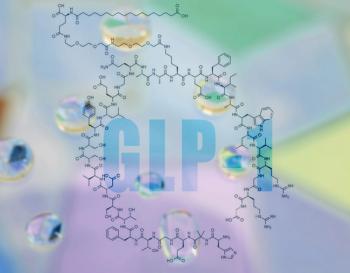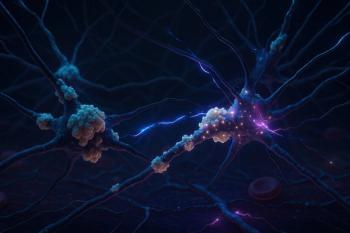
- Vol 42, Issue 11
Tolerance to Stimulant Medications in the Treatment of Children With ADHD
Key Takeaways
- Long-term tolerance to stimulant medication in ADHD treatment may undermine its effectiveness, as seen in the MTA study.
- Acute tolerance was addressed with controlled-release formulations, but these did not prevent long-term tolerance.
Take a look at the long-term effects of stimulant medications on ADHD, specifically tolerance and its implications for treatment efficacy.
SPECIAL REPORT: ADHD
The hypothesis of tolerance to stimulant medication during treatment of attention-deficit/hyperactivity disorder (ADHD) is not new. For 50 years, it has been considered but not embraced; there is a long history of discounting or ignoring the contributions of tolerance to the dissipation of benefit and discontinuation of medication during long-term treatment.1,2 Also, the possible presence of long-term tolerance in the 16-year Multimodal Treatment of Attention Deficit Hyperactivity Disorder (MTA) study was not recognized or reported.3 The presence of tolerance offers a plausible hypothesis for the absence of evidence on the effectiveness of long-term ADHD treatment with stimulant medication.
Definition and Description of Tolerance
The usual definition of tolerance is for a stable dose of medication (“decreased effect of a drug when the same dose is administered repeatedly over time”), but other definitions can be stated for an adjusted dose, such as “maintenance of the same effect or decreased effect of a drug as the dose is increased over time.” These concepts of tolerance are relevant to the widespread clinical practice of treatment of ADHD with formulations of the stimulant drugs methylphenidate (MPH) and amphetamine (AMP), assumed to be catecholamine agonists that target the neurotransmitters dopamine (DA) and norepinephrine, because these concepts focus attention on common complications of long-term treatment. For example, in the MTA study, (1) some participants required dose increases across the first year of treatment by protocol to maintain initial relative benefits, (2) most reported dissipation of clinical benefit 1 to 2 years after transition to treatment as usual, and (3) almost all discontinued medication after extended uninterrupted treatment.
Long-Term Tolerance in the MTA Study
MTA was the first long-term (>1 year), randomized controlled trial (RCT) of treatment by protocol with medication (Med), provided alone or in combination with behavior modification (Beh), or treatment as usual in community care. After the RCT phase was initiated in 1994, MTA was extended as a 15-year prospective observational long-term follow-up (LTF) cohort study with regular assessments from childhood to adulthood, and self-selected use of medication created naturalistic subgroups with long-term patterns of Consistent, Inconsistent, and Negligible use of medication at the end point.
Findings from the RCT phase are shown in
Findings from the LTF phase are shown in
Acute Tolerance to MPH
In the RCT phase of the MTA study, an approved and available sustained-release (SR) formulation of MPH (20 mg Ritalin SR) was not evaluated. In this era (1994-1998), it was rarely prescribed in clinical practice, based on a consensus that a once-a-day administration of SR-MPH was less effective than a dose-equivalent regimen of IR-MPH (10 mg twice a day) due to acute tolerance (tachyphylaxis). Decades ago, basic science studies addressed how neural processes associated with the neurotransmitter DA may underlie tachyphylaxis. Volkow et al applied positron emission tomography (PET) imaging methods in human adults, and Grace applied microdialysis and electrophysiology methods in animals.8,9 Also, Swanson et al applied clinical pharmacology methods in children with ADHD in the University of California, Irvine Laboratory School Protocol to provide data for pharmacokinetic/pharmacodynamic (PK/PD) analyses of the effects of experimental drug delivery profiles.10 These research programs provided converging views of the neural effects of stimulant drugs that theoretically contributed to tachyphylaxis after intravenous or oral administration of MPH (see
The theory of tachyphylaxis suggested an ascending drug delivery profile for MPH could overcome tolerance by counteracting these DA-related adaptations, and this would maintain a constant drug effect across the day (Swanson et al).11
Concerta was rapidly adopted in clinical practice, and within a year, long-standing prescribing practices were changed, and most prescriptions for stimulant medication were for this new CR formulation. The commercial success of Concerta resulted in the development of additional CR formulations of MPH (eg, Metadate CD) and AMP (eg, Adderall XR). A large multisite study compared the MPH formulation intended to replace traditional twice-daily IR-MPH regimens (Metadate CD) and thrice-daily IR-MPH regimens (Concerta).12
Prescription records indicated that the second-generation CR formulations became the primary medications prescribed for ADHD by 2002, so they would have been taken by the MTA participants who continued extended treatment with stimulant medication in the LTF phase (which did not end until 2014). However, these CR formulations—that could overcome acute tolerance—did not overcome long-term tolerance, which still appeared to emerge and undermine the long-term benefit of extended treatment with stimulant medication in the LTF phase of the MTA study.
Current Status and Future Prospects
In 2025, as in 1995, the ADHD field faces critical questions about an enduring absence of evidence for the effectiveness of long-term treatment of ADHD with stimulant medication (Cortese et al), but now long-term refers to “more than a decade” rather than “for at least 1 year.”13 One side of this formal debate suggested the plausible hypothesis that long-term tolerance occurs during uninterrupted extended use of currently available formulations of stimulant medication for ADHD, and this undermines the continuation of relative effectiveness of extended uninterrupted treatment for more than 2 to 3 years. The initial application of the tonic/phasic DA model to ADHD (Grace) provided plausible theoretical accounts of an etiology of ADHD (low tonic DA) as well as neural adaptations to response to stimulant medication (increased followed by decreased phasic DA).14 In a forthcoming article, an update of this model summarizes the theoretical basis for 2 common strategies to deal with the dissipation of effectiveness of medication that is presumed to be a consequence of DA-based neural adaptations that underlie tolerance: (a) an increase in daily dose to overcome tolerance (and repeat this as needed with a goal to maintain full benefit) and (b) a temporary cessation of medication to reset the homeostatic balance of tonic and phasic DA systems (and then restart medication at a lower dose that may regain the previous short-term effectiveness).15
An alternative strategy is needed. For repeated dose increases, a restriction is imposed because the recommended maximum dose is often reached. This restriction is not imposed in some clinical practices (Poulton and Paterson), but previous (Davy and Rogers) and current (Ross et al) rigorous application of this unrestricted or “no-maximum” strategy resulted in very high daily doses in some cases (eg, 100-300 mg/day) that create difficulties with regulatory agencies (due to understandable concerns about abuse) and insurance providers (due to concerns about off-label use).16-18 Currently, we propose a potential alternative strategy: (1) use a single morning IR-MPH dose each day (titrated to initiate the full beneficial clinical response, but only for a short duration of 3-4 hours), which may provide sufficient time before the next dose (24 hours later) for the DA system adaptation (ie, increased tonic DA) to return to baseline (ie, to “reset” each day); and (2) before the offset time of IR-MPH dose, administer a nonstimulant medication for ADHD (with a goal to maintain beneficial clinical effect across the day) that does not target the DA system and prolong the stimulant-inducted adaptation.15 Some approved nonstimulant drugs (eg, atomoxetine, clonidine, etc) do not have large beneficial effects on both symptom domains of ADHD (ie, inattention as well as hyperactivity/impulsivity), but data from a few studies indicate other nonstimulant drugs may have effects that approach those of MPH (eg, modafinil or mazindol).
Based on the success of the previous theoretical approach applied to address acute tolerance, this alternative approach may be warranted even though it is theoretical and needs to be evaluated to provide empirical validation and support. However, it does address the possibility (or plausibility) of long-term tolerance based on DA-based theories that have stood the test of time: the Volkow et al site-of-action theory and the Grace tonic/phasic theory of dopamine system regulation, which provide basic science information that affords a solid starting place to direct the search for alternative strategies to address tolerance (see
Dr Swanson is a professor emeritus of pediatrics at the University of California, Irvine (UCI) School of Medicine and the founding director of the UCI Child Development Center and the collaborative UCI-Orange County Department of Education school-based treatment program. He was a principal investigator of the National Institute of Mental Health–funded 6-site Multimodal Treatment of Attention Deficit Hyperactivity Disorder study and the 6-site Preschool ADHD Treatment Study. His current research focuses on physical growth (auxology) in children as well as the effects of long-term treatment and outcomes for childhood-onset attention-deficit/hyperactivity disorder. He has received support from various pharmaceutical companies, which in the past 5 years included honoraria, consulting fees, and support for travel to and presentations at professional meetings by Medice, NLS, and Takeda, and previously, but not currently or recently (in the past 5 years), support for projects funded by Alza, Celgene, Celltech, Cephalon, CIBA, Gliatech, Janssen, Lilly, McNeil, Medice, NLS, Novartis, Noven, Richwood, Shire, UCB, and Watson. He also has a US patent for Pixel Averages for Auxological Assessment (PIXA3) and a US patent pending for Prevention of Accumulated Tolerance for Stimulant Medication for Treatment of ADHD (PATSMTA).
Dr Grace is a distinguished professor of neuroscience and professor of psychiatry and psychology at the University of Pittsburgh in Pennsylvania. His research focuses on neural processes related to regulation of the important neurotransmitter dopamine. He has received support from Alkermes, Concert, Lundbeck, Lyra, Merck, Newron, Roche, and Takeda.
References
1. Weiss G, Kruger E, Danielson U, Elman M.
2. Safer DJ, Allen RP.
3. Swanson JM, Arnold LE, Jensen PS, et al. Long-term outcomes in the Multimodal Treatment Study of Children with ADHD (the MTA): from beginning to end and beyond. In: Banaschewski T, Coghill D, Zuddas A, eds. Oxford Textbook of Attention Deficit Hyperactivity Disorder. 2nd ed. Oxford University Press; 2018:313-332.
4. Handelman K, Sumiya F.
5. The MTA Cooperative Group. Moderators and mediators of treatment response for children with attention-deficit/hyperactivity disorder: the Multimodal Treatment Study of children with attention-deficit/hyperactivity disorder. Arch Gen Psychiatry. 1999;56(12):1088-1096.
6. Vitiello B, Severe JB, Greenhill LL, et al.
7. Swanson JM, Arnold LE, Molina BSG, et al; MTA Cooperative Group.
8. Volkow ND, Ding YS, Fowler JS, et al.
9. Grace AA.
10. Swanson J, Gupta S, Guinta D, et al.
11. Swanson J, Gupta S, Lam A, et al.
12. Swanson JM, Wigal SB, Wigal T, et al; COMACS Study Group.
13. Cortese S.
14. Grace AA. Psychostimulant actions on dopamine and limbic system function: relevance to the pathophysiology of ADHD. Stimulant Drugs and ADHD: Basic and Clinical Neuroscience. Oxford University Press; 2001:134-157.
15. Grace AA, Swanson JM. An update on actions of methylphenidate on dopamine and its relevance to pathophysiology and treatment of ADHD. 2025. In press.
16. Poulton AS, Paterson R.
17. Davy T, Rogers CL.
18. Ross L, Sapre V, Stanislaus C, Poulton AS.
Articles in this issue
17 days ago
Interrelation of Hormones and Adult ADHD24 days ago
ADHD: Correcting Careless Myths29 days ago
After Reading Music from Apartment 8about 1 month ago
Let’s Retire HaloperidolNewsletter
Receive trusted psychiatric news, expert analysis, and clinical insights — subscribe today to support your practice and your patients.














